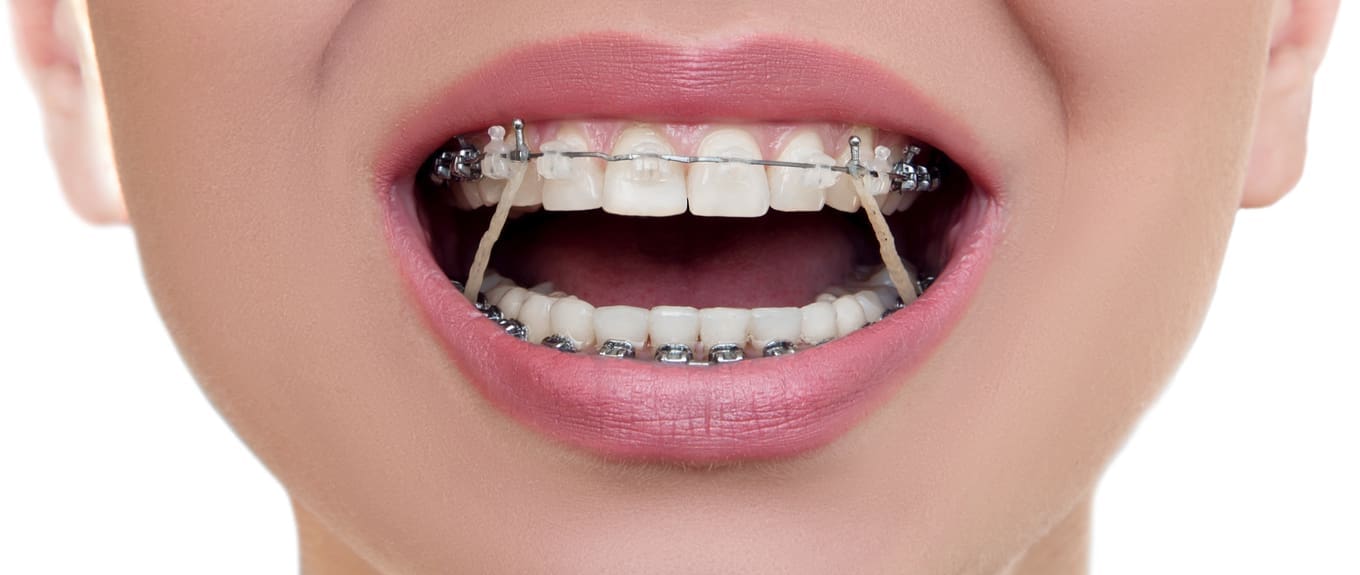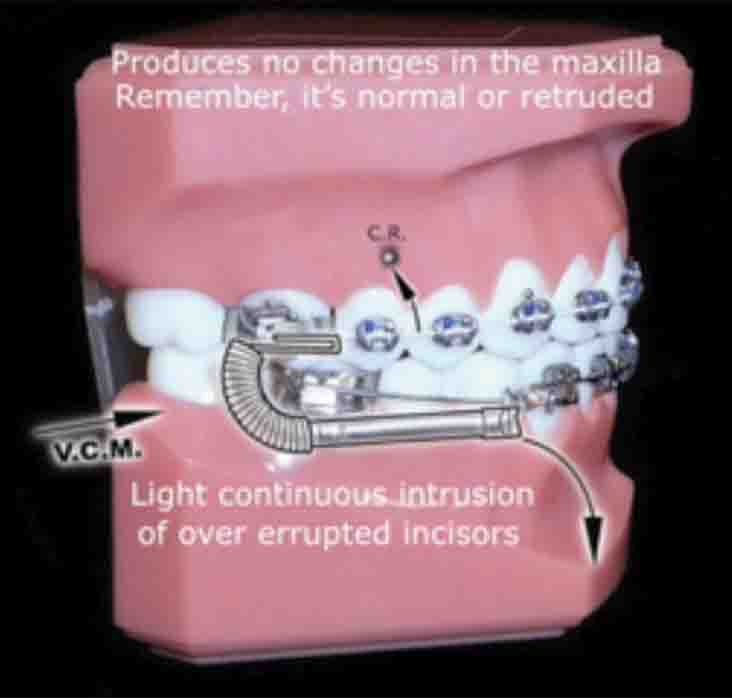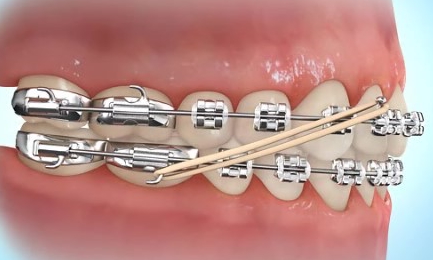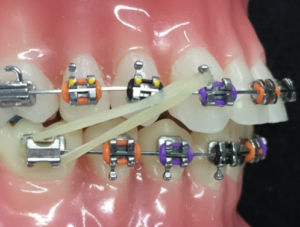class ii elastics force
50 packs of 100 elastics. Because the force is usually not parallel to the occlusal plane.

Case Report Jco Online Journal Of Clinical Orthodontics
Complement the Motion 3D Appliance with Carriere Oral Elastics which were designed specifically to work seamlessly with this appliance and provide optimum results.
. 1 Intermaxillary elastics which have the capacity to produce both sagittal and extrusive forces at the point of attachment are the most popular mechanism for correction of sagittal problems. Air Force mens tennis welcomes four freshman that comprise the class of 2026 announced today by head coach Dan Oosterhous. An equivalent force system at the CR of the maxillary arch yellow arrows indicates that a large moment is only produced in the maxillary arch closing the open bite and reducing the Class II malocclusion.
Biomechani c influence of Class II elastic force during 3 stages Michel Langlade- Optimization of orthodontic elastics book An example of a Class II elastic placed on the distal buccal part of the lower archwire and on an anterior loop in front of the upper canine. The influence of class I and class II elastics at different force levels 1 N and 2 N were studied. Class II Elastics Login to See Price.
Although Class II elastics have been widely used in the correction of Class II malocclusions there is still a belief that their side effects override the intended objectives. The pattern of the force line varied in the area of angulation from 0 degree to 40 degrees relative to the arch plane. These elastics are available in two different force levels for both stages of treatment ensuring a smooth and timely.
Class II Force 1 elastic ¼ 6 ½ oz from upper cuspid to lower first molars. The class 2 elastics hook to a forward tooth on the top arch typically your canine tooth. Previous Post CLASS III ELASTICS Next Post CLASS II RIGHT CLASS III LEFT ELASTICS Leave a Reply Cancel Reply.
The four freshmen arrived at the Academy for in-processing and the start of their four-year playing career at the Academy. 8 Sinaran Drive Novena Specialist Center 06-01 Singapore 307470 O. A Class II elastics with traction force.
Next is the force. In occlusion if this elastic makes a 20 degree angle with the. Class ii elastics force Tuesday June 7 2022 Edit.
Am J Orthod Dentofacial Orthop 114. You must be logged in to post a comment. Effects upon the mandibular arch.
These measurements reflect actual distances the elastics are stretched when used in class II and III elastics. In the present study we tested 8 oz 22679 g force elastics considering their spreading in the clinical setting. And that further stretching produced little change in force values Table 2.
Are Class Ii Elastics As Effective As A Functional Appliance A Trial That May Answer This Question Kevin O Brien S Orthodontic Blog A Horizontal And Vertical Forces Resulting From A Unilateral Class Ii Download Scientific Diagram. When 14 elastics were stretched from extension A to B a statistically significant. Dr Stefan Vaz - About Braces.
Class II elastics are auxiliary forces that can be classified as active elements in a fixed appliance system1 They have been used in the correction of Class II malocclusion since the early days of orthodontic treatment26 although some undesirable effects can occur depending on their vertical force vectors4610 The vertical force can. 6397 7177 F. Effects upon the maxillary archupper incisors are more vertical extrusion and downward movement of anterior occlusal plane backward movement of the upper arch dental distalization.
This article based on measurements of 30 cases illustrates that the effect of the vertical component of force from Class II elastics in reducing the intrusive force generated by the anchor bands in the upper archwire is less than previously believed. The measurement is given on ounces or grams. 1 They can be used for many different reasons such as Class 2 malocclusions to reinforce anchorage in a case where an extraction has been done to allow the maxillary incisors to move backwards and to correct midline deviation and allow buccal.
Class II elastics Class 2 elastics are used from the lower first molar to the upper canine tooth. Class II elastics are usually employed in the treatment of excessive overbite and overjet with the Begg technique. Subscribers should log in below.
Short Class II elastic force red arrow placed anteriorly in a Class II open bite case. Class ii elastics are active auxillary force element in fixed appliance system which has been used for class ii correction since the early days of orthodontic practice. This is the measure of force delivered at both points of attachment.
Distances characterizing Class II malocclusions in adults and. The effects of CL II elastic force on a dry skull measured by hylographic interferometry Am J Orthod. The cant of the mandibular plane of occlusion.
Overall the use of Class II. The class II elastics have different effects6. Recent studies on elastic force properties calculated sample sizes.
1-3 Class II elastics. Study of anchorage in bioprogressive versus standard edgewise treatment in Class II correction with intermaxillary elastic force. The effect of Class II elastics on bite opening and the extent of such an effect is uncertain.
To analyze the applied forces at. Forsus group mean age 1419 102 years and elastics group mean age 1375 116 years. Dentibots - Aurora Clear Non -Latex Class II Elastics - 50 bags of 100.
45oz 126g indicate the force delivered if the elastic is stretched 3 x its size. Lingualy tipped lower molars can be uprighted by the use of class II elastics attached between to lingual hook of the lower molar and intermaxillary hook of upper arch wire on the same side. This article can only be viewed by JCO subscribers.
Class ii elastics are auxiliary forces that can be classified as active elements in a fixed appliance system. Class II elastics are designed to exert an anteroposterior force on maxillary teeth and a postero-anterior force on the mandibular arch. The force recommended is 1 ½ to 2 ½ oz.
Jack Brown Phillip Deaton AJ Moore and Kabir Rajpal join the Falcons this season. A ppliances designed for Class II correction generate either pulling interarch force vectors intermaxillary elastics or pushing interarch force vectors bite-jumping devices. The aims of this study were to assess the average inter-arch.
Buccal tipping of lower incisors forward movement of the entire. The orthodontic measurement and simulation system OMSS was employed to determine force loss due to friction and to analyze. Force 2 316 8 oz.
Quail 316 2 oz. The sizes of intra-oral elastics are standardised to 18 32mm 316 48mm 14 64mm 516 80mm 38 95mm.
Elastics Bee Happy Orthodontics

Direction Of Force For Class Ii Correction A Class Ii Elastics With Download Scientific Diagram

The Physics Of Class Ii Correction Orthodontic Practice Us

Are Class Ii Elastics As Effective As A Functional Appliance A Trial That May Answer This Question Kevin O Brien S Orthodontic Blog

Light Class Ii Elastics 3 5 Oz Given For Canine Retraction Note That Download Scientific Diagram

The Physics Of Class Ii Correction Orthodontic Practice Us

Elastic Wear Protocol Northlake University Orthocare Orthodontics

What Are Interarch Rubber Bands

Intraoral View Of Miniplate Anchored Class Ii Elastics Download Scientific Diagram

Elastics In Orthodontics Orthodontics In Summary

Class Ii Elastics Lateral View Hd Edition Youtube

Class Ii Elastics Using The Lower Miniscrews As Anchorage And Download Scientific Diagram

How To Put Rubber Bands On Braces Premier Orthodontics

A Horizontal And Vertical Forces Resulting From A Unilateral Class Ii Download Scientific Diagram

Case Report Jco Online Journal Of Clinical Orthodontics

Are Class Ii Elastics As Effective As A Functional Appliance A Trial That May Answer This Question Kevin O Brien S Orthodontic Blog
